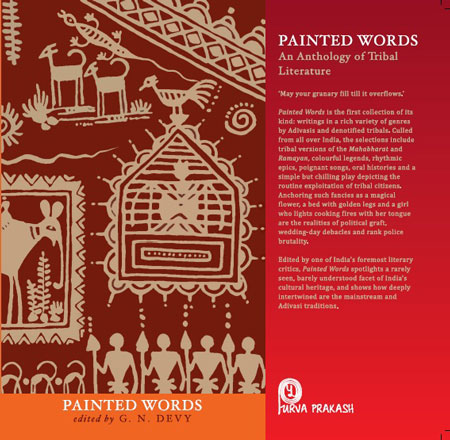
Photo © Photo: Twitter/@adarshahgd
Shantharam Budna Siddi, from the Siddi [Sidhi] community of Karnataka which traces its roots to Africa, has been nominated to the Karnataka Legislative Council by Governor Vajubhai Vala. This is the first time that the community will be represented in the legislature. […]
According to him, the Siddi community traces its roots to Africa, somewhere in Mozambique and Kenya whom the Portuguese had trafficked as slaves to India along the coasts of the Western Ghats.
The Portuguese left after India got independence and the Siddi community started dwelling in the deep forests of Western Ghats.
“We are found only in Mumbai, Goa and the Western Ghats of Karnataka,” Siddi told PTI.
To a question, he said he has no information about the roots or the village his ancestors belonged to but somehow the community managed to save their language.
The language, according to Siddi, is a mixture of Konkani-Marathi, which also has some words, which is neither Konkani, Marathi or even Sanskrit. […]
“I am not thinking of the Siddi community alone, I am equally concerned about the entire tribal community of the state,” Siddi said.
There are 54 tribal communities and all of them confront different challenges, said Siddi, adding that there was a need to address it collectively at the different levels of administration.
Siddi is equally concerned about many other communities who are living in subhuman conditions but have not been categorised as tribals. […]
Source: “Karnataka: Shantharam Budna Siddi Becomes First Siddi Legislator”, PTI/TheWire.com 25 July 2020
URL: https://thewire.in/rights/karnataka-shantharam-budna-siddi-becomes-first-siddi-legislator
Date visited: 25 July 2020
The labels like Siddis, habshis are embedded in Indian local, state and national constructs such as records that socially assign. It is interesting to see the racial term Siddi emerged as a surname in order to address their own needs now that they have been granted Scheduled Tribe status in Karnataka since 2003. They kept their surnames Siddi though it is a racial term. And the term Habsi/Hafsi/habshi is considered an insult/abusing word in India .
Their major economic resources are agricultural land and the western ghat forest. Their main source of livelihood is agricultural laborers. Few among them own pieces of land while others live on encroached lands in order to grow paddy and sugarcane. Few of the men are watchmen security officers, truck drivers, masons, logs cutters, and other such day laborers. […]
Source: buDa- folklore: Siddis of Karnataka and the Habshis from Abyssinia … -The Lost African Tribe
Address : https://buda-honnavar.blogspot.in/2013/07/siddis-of-karnataka-and-habshis-from.html?spref=fb
Date Visited: Fri Jul 26 2013 11:32:37 GMT+0200 (CEST)
Siddi Dance-Damami Kunita from Karntaka siddis
[Bold typeface added above for emphasis]
Learn more
Bondage | Bonded labour | Human trafficking | Slavery | Zamindari
Childhood | Childrens rights: UNICEF India | Safe search
Colonial policies | Freedom Struggle | Independence
Denotified Tribe vs. “criminal tribe“
Figures, census and other statistics
Health and nutrition | Recommendations by the Expert Committee
“In fact, we still do not know to what extent global supply chains are maintained by slavery and child labor. Because of these and other factors, slavery today is more profitable than ever before, and also more woven into the global economy than ever before.” – Siddharth Kara on the persistence of modern slavery| Learn more >>
Human trafficking is a crime. To report in India, call
– Shakti Vahini +91-11-42244224, +91-9582909025 or
– Childline 1098 (national helpline)
Human Rights Commission (posts) | www.nhrc.nic.in (Government of India) >>
Tips for using interactive maps
Toggle to normal view (from reader view) should the interactive map not be displayed by your tablet, smartphone or pc browser
For details and hyperlinks click on the rectangular button (left on the map’s header)
Scroll and click on one of the markers for information of special interest
Explore India’s tribal cultural heritage with the help of another interactive map >>
See also
Adverse inclusion | Casteism | Rural poverty
Demographic Status of Scheduled Tribe Population of India (Census figures 2011)
Fact checking | Figures, census and other statistics
Human Rights Commission (posts) | www.nhrc.nic.in (Government of India)
Search tips | Names of tribal communities, regions and states of India
“What is the Forest Rights Act about?” – Campaign for Survival and Dignity
“Who are Scheduled Tribes?” – Government of India (National Commission for Scheduled Tribes, NCST)
“India, a union of states, is a Sovereign, Secular, Democratic Republic with a Parliamentary system of Government. The President is the constitutional head of Executive of the Union. In the states, the Governor, as the representative of the President, is the head of Executive. The system of government in states closely resembles that of the Union. There are 28 states and 8 Union territories in the country. Union Territories are administered by the President through an Administrator appointed by him/her. From the largest to the smallest, each State/UT of India has a unique demography, history and culture, dress, festivals, language etc. This section introduces you to the various States/UTs in the Country and urges you to explore their magnificent uniqueness…” – KnowIndia (Government), States and Union Territories (Visited: 2 September 2023)
Learn more about India’s 28 States and 8 Union Territories – From Andhra Pradesh to West Bengal | Nutrition >>
